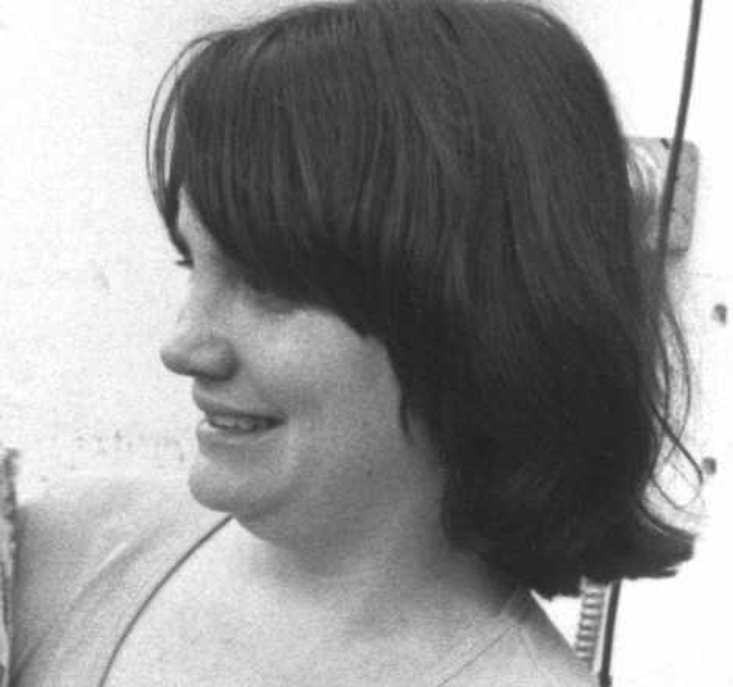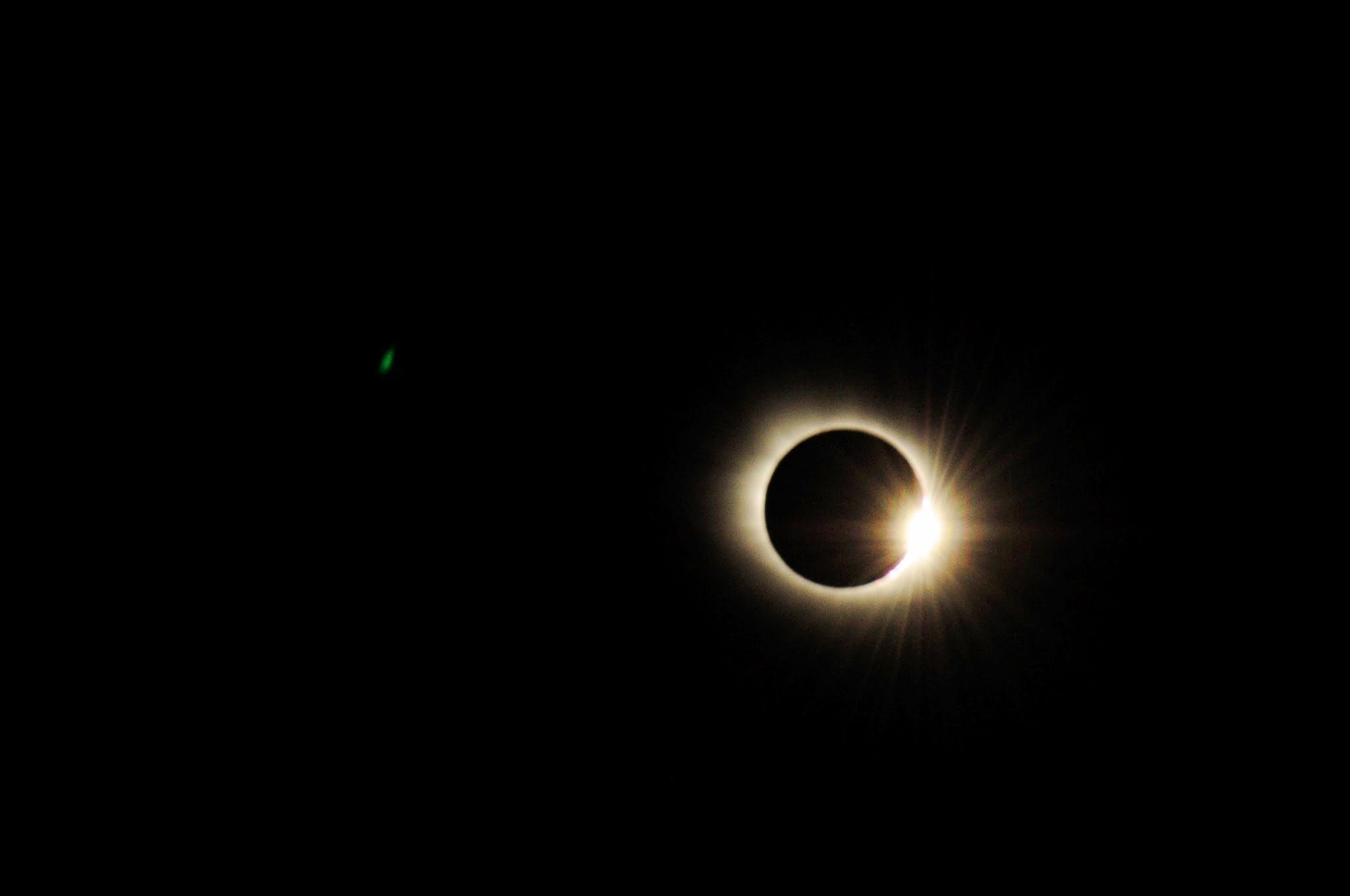
Asking about one of Peggy Norris’ pursuits will invariably knock another loose. If one keeps asking, a lifetime of niche research and novel experiences will pour into the conversation. All at once, Norris is a learned physicist, dance instructor, solar eclipse chaser, bridge enthusiast, genealogy tracker, dog rescuer, avid world traveler and—most recently—bartender. At Sanford Underground Research Facility (Sanford Lab), Norris is also an advocate for young girls in science as the deputy director for Education and Outreach.
Norris was 13 when she first discovered the beauty of atoms. She received her doctorate in physics at a time when only seven percent of physicists were women. She is a ballroom dancer and instructor. In 2018, Norris played a brilliant hand of bridge, winning her game at a national tournament in San Francisco. She walked along a dirt road in Ireland to find her mother’s ancestors, guided by a Gaelic birth certificate. And as of 2020, Norris has witnessed 16 solar eclipses on six different continents.
Norris says she owes her many pursuits to her taste for adventure and desire to constantly challenge her mind. “I’ve never been one to take a vacation and just sit on the beach,” said Norris.
One rarely meets a scientist who is only a scientist, as curious minds tend to live diverse lives. By exploring a handful of stories from a resident scientist with new endeavors always on the horizon, Sanford Lab demonstrates the exciting lives of science professionals.

Peggy Norris was thirteen when she first discovered the beauty of atoms.
On the first day of eighth grade, Norris’ earth sciences teacher instructed the class to write an essay on why they thought the sky was blue. Amidst imaginative guesses, one student got it exactly right. Impressed, the teacher pulled young Norris aside and quizzed her on the topics he planned to cover in the first weeks of class.
“The first section was about rocks and minerals and, well, I already knew all of that,” Norris remembers. Her father was a geologist for an oil company in West Texas who treated both Norris and her younger brother as scientists in their own right. “We would go rock hunting and fossil hunting, and we were both junior members of the local rock club.”
When her teacher realized the material would be review for Norris, he sent her to the library to study. Alone in the library, she reached for the first book in her school’s collection of the Encyclopedia Britannica. Flipping through “A’s” she paused at an entry on atoms.
“I kind of fell in love with the idea that that everything is empty space—that atoms are almost all empty space, but they hold together to make the solid earth and tables and us and everything else. I decided that's what I wanted to study,” Norris said.
Norris received her doctorate in physics at a time when only seven percent of physicists were women.
Although her father encouraged her interest in science, Norris soon realized that few young women were pursuing careers in science. Norris remembers proudly earning a spot in advanced summer programs, only to be selected for Spanish and reading courses, while her brother was chosen for math and science. “I was always very envious of that,” she recalls.
Still, Norris was determined to carve out a path for herself into the realm of science. While still in high school, she traveled on a Greyhound bus from a small town in Texas to Northern Illinois University to attend a summer science program hosted by the National Science Foundation.
“At the program, I researched quantum chemistry—basically on the border between chemistry and physics,” Norris said. After she graduated, she went to Rice University, where she continued to merge her interests in physics and chemistry.
“I liked the physical side of chemistry, which was basically watered-down physics, so I went ahead and got a physics major along the way,” Norris said.
In graduate school at Columbia University, Norris studied nuclear chemistry and the then-emerging science of lasers. In her class, Norris was joined by only one other female student. When she graduated with her doctorate, only seven percent of physicists in the United States were women.

For 25 years, Norris worked as a staff scientist at Lawrence Berkeley National Laboratory (Berkeley Lab), supporting nuclear physics research through the use of accelerators. In 2009, she came to work at Sanford Lab, where she has become an advocate for the next generation of young girls in physics.
Norris is a ballroom dancer and instructor.
Once her kids were grown and attending college, Norris was in search of something to keep herself active. She picked up ballroom dancing through the University of California, Berkeley, then joined a small studio for more personalized instruction. Soon, she was helping the instructor and being asked to help instruct new dancers at the ballroom dance club at Berkeley Lab.
Throughout her time teaching, Norris has noticed that most dancers start out with similar insecurities: “Most of the men are worried that everybody is staring at them and will see every mistake they make. While the women often try to lead their partner, rather than follow. I just try to encourage everyone to have fun, and not to worry about how they look.”
Norris once walked along a dirt road in Ireland to find her mother’s ancestors, guided by a Gaelic birth certificate.
Norris also has a knack for genealogy research. Guided by her great-grandfather’s birth certificate written entirely in Gaelic, Norris traveled to Ireland to try to meet her extended family. In a local library’s genealogy room, Norris had the birth certificate translated. Digging even deeper, she located census records from 1901 detailing the names of her distant relatives.
From there, she sought the direction of a local historian to a farmer’s field, down one wrong road, then a right one, to the doorstep of Peter Wheeler, her grandmother’s first cousin.
“He knew so much of the family history—their whole family had grown up around there,” Norris said. “He knew of relatives in the United States that I hadn’t even known about.”
For her mother’s eightieth birthday, Norris brought her to Ireland and introduced her to family members her mother had never met.
In 2018, Norris played a brilliant hand of bridge, winning the game at a national tournament in San Francisco.
Sharp minds are often at play, and Norris has been playing Bridge since she was twelve. She first learned with her parents, and later played in high school and university. Today, she still joins a local club for games.
In 2018, Norris set off for a bridge tournament in San Francisco. There, she met another player from Michigan. They began playing together and, at the end, the pair won their game.
After years of experience, she’s still fascinated by the possibilities of the game.
“What I like about bridge is that, even though I’ve been playing for 40 plus years, I still run into hands I’ve never seen. There are so many possibilities with 13 cards in your hand—you really have to think,” Norris said.
Norris has witnessed 16 solar eclipses on six different continents.
Norris has chased Solar Eclipses from Australia to Svalbard Island, which lies 400 miles north of mainland Norway, above the Arctic Circle. “I haven't been to Antarctica yet,” Norris admitted, “but that might happen next year.”
Norris has traveled with groups to small towns and islands, even floated on the ocean to get near totality.
“Once you start chasing solar eclipses, you figure out just how much of the earth is really water,” Norris said, laughing. “A lot of the time, eclipses are hardly over land. A lot of trips require cruises or trips out on small boats.”
Norris said that each eclipse is a unique experience and that she has seen a spectrum of phenomena linked to these galactic events.

“It takes your breath away. You can see the whole corona of the sun, which goes out to maybe three or four times the diameter of the Sun,” she said. “There’s all these phenomena that can happen during a solar eclipse. You can have the diamond ring effect, where the last little tiny bit of light flashes like a diamond ring. Or you can have what's called Baily's beads, where you see light coming through the crater areas on the moon, looking like a string of beads.”
Norris is already teasing out her next pursuits.
And there's more to her story, including her efforts as a dog rescuer, her travels as a wildlife photographer, her desire to inspire minority students toward careers in science and even her recent gig as a bartender at her daughter’s new restaurant in Deadwood, South Dakota. But those tales may be for another time.